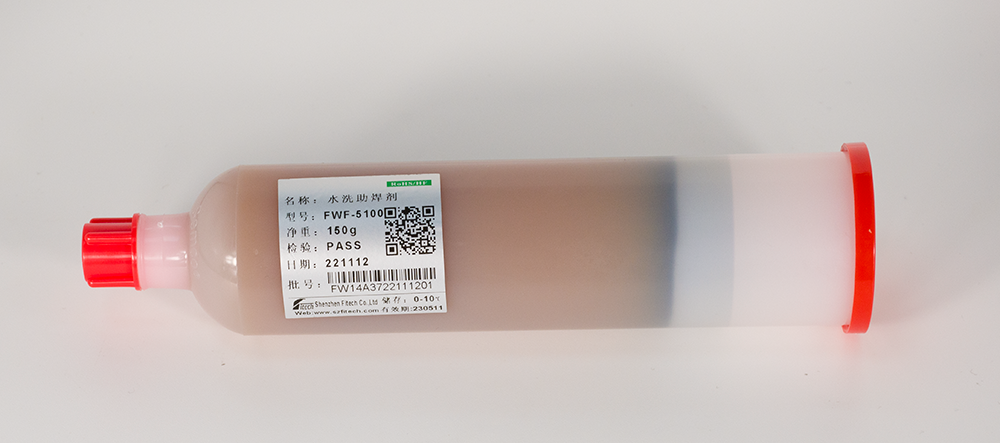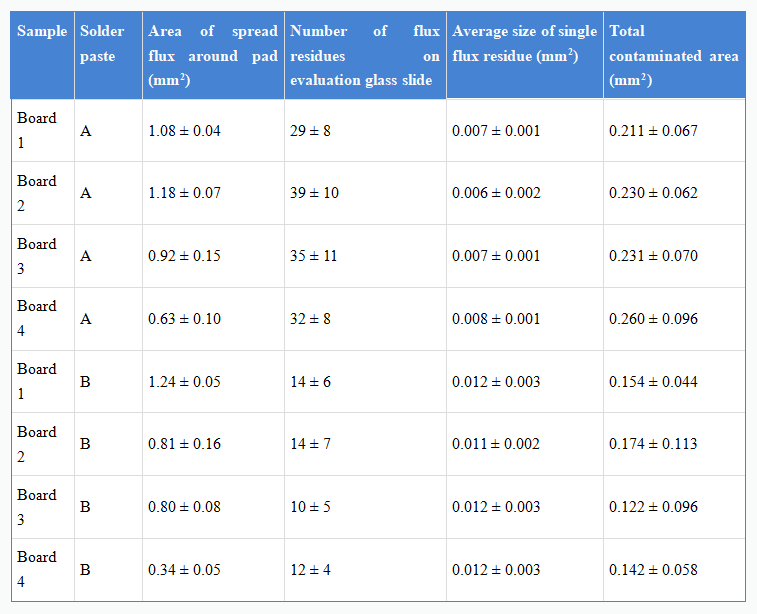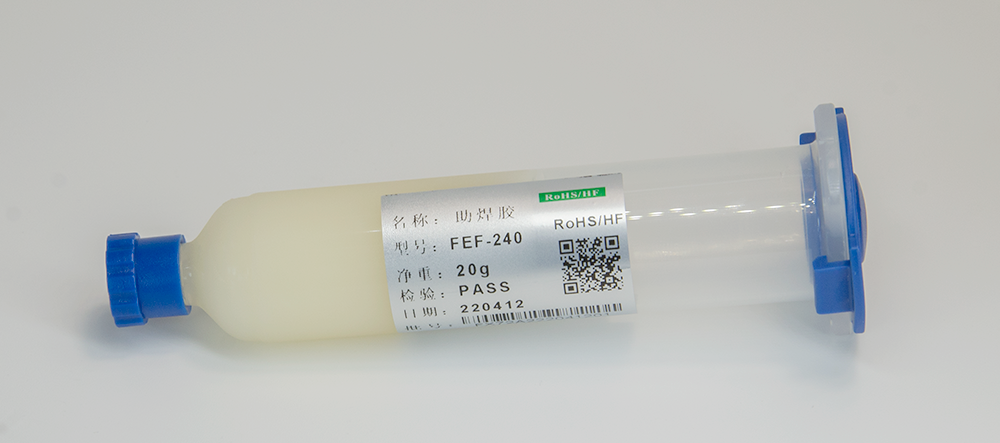The effect of flux type on the spatter during soldering of solder paste - Fitech Solder Paste

The effect of flux type on the spatter during soldering of solder paste - Fitech Solder Paste
Reflow soldering is a very complex process in electronic assembly. As component package size decreases, the number of component terminals increases, and the limitations of lead-based solder alloys, many process issues arise. Possible concerns include bridging, non-wetting, de-wetting, solder balls, standing stones, open joints, voids, warpage, and other related problems. Nearly 60 percent of these problems can be attributed to the solder paste soldering process, especially for ultra-fine interconnects. However, many process problems are also associated with the use of fluxes. Adverse side effects of flux may occur in the form of poor wetting, corrosion, electrochemical migration, cavity formation, or flux splatter. Flux type may also affect the microstructure of the solder joint and the intermetallic compound layer between the substrate and the solder, which is directly related to the long-term stability and reliability of the solder joint.
On the other hand, the use of fluxes designed for lead-free solders increases the number of flux-related problems. Since lead-free solder alloys have poorer wetting properties than lead-based alloys, they have higher surface tension and therefore require more chemically stronger fluxes. To meet cleanliness requirements, modern lead-free fluxes must contain activators, i.e., halides. The international standard IPC J-STD-004B classifies fluxes into different categories according to their halide content. Fluxes containing halide activators cause a more intense reaction to remove oxides than fluxes used with lead-based solders. In addition, the higher the amount of flux, the higher the content of volatile organic compounds (VOCs) that function as solvents. During reflow of the flux paste, the solvent may evaporate excessively. These two factors can lead to a host of process problems.

Today, no-clean fluxes are widely used in solder pastes to avoid additional cleaning processes and to reduce production costs. According to industry analysis, the market share of no-clean fluxes is 40%. Flux residue on the board after the soldering process should be solid and inert. Lee noted that such residues should not cause any reliability problems such as corrosion or oxidation of solder joints or contact pads. However, some previous studies by Zhan et al. demonstrated that no-clean flux residues may cause reliability problems related to corrosion and electrochemical migration. In addition to corrosion or electrochemical migration problems, no-clean flux residues may also cause other problems related to their insulation properties.

Fig. 1. An example of contaminated gold contact pads on a real commercial product.
When flux spills out of the solder paste during reflow and contaminates the solder surroundings, two potential threats arise. For one, the solder residue adheres to the test pads, making internal circuit testing difficult. The residue may act as an obstacle, preventing the internal circuit probe from making contact with the test disk, so even if the board is fully functional, the tester will automatically mark it as scrap. In addition, the solder residue can also contaminate the gold connection pads ("gold fingers") that serve as connectors and can make poor electrical contact. Both of these problems are described in detail in the study by Berntson et al. A real commercial example of a "gold finger" contaminated with no-clean solder paste flux residue can be seen in Figure 1.
Cause of molten paste splash
Berntson et al. presented two theories on the root cause of molten paste splash. The solvent emission theory suggests that molten paste spatter is caused by the evaporation of large amounts of solvent and other volatile components. On the other hand, the polymerization theory suggests that forces caused by the surface tension of molten tin act on the flux inside the soft brazing solder. In the case of rapid heating (e.g., at elevated temperatures during the reflow stage), the force is fast enough to push the flux out of the molten tin. Based on experimental observations, the authors favor the second theory. Flux itself is not sputtered during heating and is only sputtered when present in the solder paste. However, this study was limited to Pb-based solders and fluxes designed for Pb-based soldering. In addition, molten paste spatter can be reduced by increasing the temperature and time of the preheating phase and by using a ramp-soak-spike (RSS) temperature profile instead of a ramp-to-spike (RTS) profile. These cases show that the influence of the solvent is also important.

Fig. 2. Surface tension equilibrium diagram for the spread flux.
Subsequent studies have focused on the problem of solder ball generation, which is also related to solder paste spattering, although there are other influencing factors, such as oxidation of metal particles in the paste. experiments on bismuth-tin solder paste were conducted by Tan et al. who concluded that the probability of solder ball generation increases with increasing temperature gradient in the reflow stage. chansa-ngavej and Kasemsomporn confirmed that the temperature gradient and preheating stage have a strong effect on the generation of solder balls caused by sputtering.
However, many studies have shown that modifying the temperature profile is not always a suitable solution, since it also strongly affects the creation of the welded joint as well as its characteristics. Moreover, it is usually not possible to modify the temperature profile in industrial practice, since thermal conditioning requires a lot of time that cannot be wasted in mass production. Therefore, other methods that may reduce or eliminate this problem are being investigated. Changing the soldering technique can also be beneficial, for example, by using ultrasound in the soldering process. Hu et al. indicate that ultrasonic treatment helps solder wetting and interfacial reactions, and therefore reduces the amount of solder paste and thus the probability of oil spatter. Another promising technique is vapor phase soldering, in which the PCB surface is protected from flux contamination by a layer of inert solder solution. However, in practice, changes in technology are usually not feasible.
Evaluation on solder sputtering
As can be seen from the apparent differences in the table for the solder pastes, this may be mainly due to the different chemical compositions. In the case of Paste B, which contains less active solder paste and less halogens, the amount of solder paste residue is reduced by an average of 63% compared to Paste A. Also, the average solder paste residue size was smaller for Paste A than for Paste B. Theoretically, the higher contamination rate left after soldering with Paste B increases the probability of droplets covering the circuit test pad, thus threatening the functional testing of the entire board. On the other hand, the probability of this situation is reduced because there is less residue and the total contaminated area is reduced. For Paste B, the total area of all solder paste residues is smaller and therefore the total amount released and spilled from the paste is also smaller. It can be concluded that solder pastes containing less halogens significantly reduce the spattering effect.
Table 1. Results of flux spreading and spattering evaluation.

The results illustrate the critical importance of the choice of flux (solder paste) in dealing with the problem of slag spatter. The use of ROL1 fluxes containing more halogens increases the likelihood of slag spatter compared to ROL0 fluxes and therefore ROL0 fluxes are preferred in practice. However, it must be considered that flux wetting may be affected.
Shenzhen Fitech is able to produce highly reliable ROL0 no-clean, water-wash fluxes and epoxy fluxes for high precision and reliable packaging in wafer bump soldering, chip vapor deposition soldering, BGA, SiP, CSP, MicroLED packaging, module ICs, etc. Welcome to inquire for more content.

References
Petr Veselý, Karel Dušek, Denis Froš. (2022). Toward reducing no-clean flux spatter during reflow soldering: Investigating the effect of flux type, solder mask, and solder pad design. Journal of Manufacturing Processes, vol. 81, pp.696-706.

















 Back to list
Back to list



